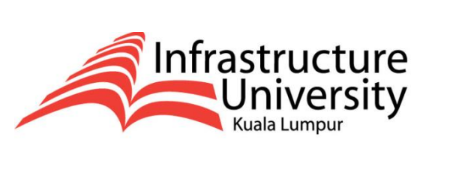THE EFFECT OF MUDHARABAH, MUSHARAKA, AND IJARAH FINANCING TO RETURN ON EQUITY IN BANK BRI SHARIA PERIOD 2016-2020
Abstract
Aim of this research is the phenomenon on the 2016-2020 financial statements of BRI Syariah Bank. It shows that the increase in income is not always followed by an increase in Return On Equity (ROE) at BRI Syariah Bank, vice versa. The purpose of this study was to determine the effect of mudharabah, musyaraka, and ijarah both in the long and short term on Return On Equity (ROE). The method of this study used quantitative methods, and used secondary data. The population and sample used in this study are BRI Syariah Bank monthly reports, including mudharabah, musyaraka, and ijarah in the 2016-2020 period. The analytical method used is the Error Correction Model (ECM) with the Eviews program. The results in this study indicate that in the short term and long term, mudharabah has a significant positive effect on return on equity (ROE), the short term results show that the t-statistic (t-count) is greater than the t-critical (2.833045>2.002247). . Meanwhile, the results of the long-term test show that the t-statistic (t-count) is more significant than t-critical (2.467613>2.002247). Musharaka in the short term and long term affects the return on equity (ROE). The short-term results show that the t-statistic (t-count) is greater than the t-critical (2.909601>2.002247). Meanwhile, the results of the long-term test show that the t-statistic (t-count) is more significant than t-critical (2.733504>2.002247). While ijarah in the short term and the long term does not affect the return on equity (ROE), the short term results show that the t-statistic (t-count) is greater than the t-critical (1.330407<2.002247). Meanwhile, the results of the long-term test show that the t-statistic (t-count) is more significant than t-critical (1.256261<2.002247). Simultaneously, in the short term, mudharabah, Musharaka, and ijarah have a significant and positive effect on the return on equity (ROE) of 23.8249%. While in the long term, it has a significant effect of 28.3164%.
Downloads
References
Aditya, M. R. (2016). Pengaruh Pembiayaan Mudarabah dan Pembiayaan Musyaraka terhadap tingkat Profitabilitas Bank Umum Syariah Periode 2010-2014. Jurnal Profita, 4.
Andrianto, & Firmansyah, A. (2019). Manajemen Bank Syariah Implementasi Teori dan Praktek. Jakarta: CV Penerbit Qiara Media.
Aziza, A. R. N., & Diana, N. (2021). PENGARUH PEMBIAYAAN MUDHARABAH DAN MUSYAROKAH TERHADAP ROE PADA BANK BCA SYARIAH. Maro: Jurnal Ekonomi Syariah Dan Bisnis, 4(1), 34–43. https://doi.org/10.31949/maro.v4i1.842
Bank BRI Syariah. (2020). Retrieved 2 December 2020, from http://www.brisyariah.co.id
Faradilla, C., Arfan, M., & Shabri, M. (2017). PENGARUH PEMBIAYAAN MURABAHAH, ISTISHNA, IJARAH, MUDHARABAH DAN MUSYARAKAH TERHADAP PROFITABILITAS BANK UMUM SYARIAH DI INDONESIA. Jurnal Administrasi Akuntansi : Program Pascasarjana Unsyiah, 6(3). Retrieved from http://jurnal.unsyiah.ac.id/JAA/article/view/8775
Harahap, S. (2018). Study Kelayakan Bisnis. Medan: FEBI UIN-SU Press.
Satria, D. I., & Saputri, H. (2016). Pengaruh Pendapatan Murabahah, Mudharabah, dan Musyarakah Terhadap Return on Equity PT Bank Syariah Mandiri. Jurnal Visioner & Strategis, 5(2). Retrieved from https://journal.unimal.ac.id/visi/article/view/221
Soemitra, A. (2016). Bank & Lembaga Keuangan Syariah. Jakarta: Prenada Media. Retrieved from https://books.google.co.id/books?id=0SFADwAAQBAJ
Soemitra, A. (2019). Hukum Ekonomi Syariah dan Fiqh Muamalah. Jakarta: Prenadamedia Group.
Wiroso. (2011). Produk Perbankan Syariah. Jakarta: LPFE Usakti.
Copyright (c) 2021 Filia Fransiska, Asmak Ab Rahman, Shinta Maharani

This work is licensed under a Creative Commons Attribution-NonCommercial 4.0 International License.














